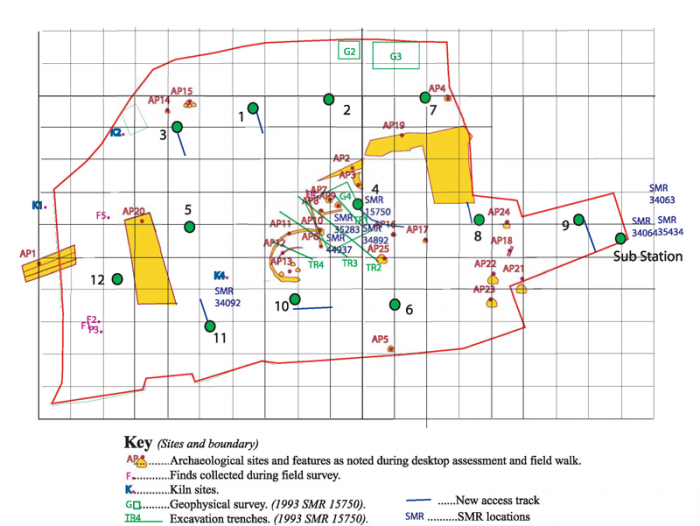A series of archaeological investigations was undertaken for EDF Development Company Ltd on land to the west of Hinkley-Point, Somerset, as part of a wider Environmental Impact Assessment to ascertain the suitability of the area for development. Both nuclear and renewable energy options were under consideration. Working with the developer over a period of time, the work included desk-based assessments, non-intrusive geophysical surveys and intrusive investigations (evaluation, excavation and watching brief monitoring).
Initial desk-based work, incorporating a site-walkover survey, resulted in the preparation of a Cultural Heritage Chapter for a wind farm application, submitted as part of an Environmental Statement. As well as compiling initial base-line data for the broader development area, the work helped to develop a mitigation strategy, which saw intrusive trial trenching in the area of one of the proposed turbines (subsequently followed by targeted excavation), geophysical surveys in the areas around two turbines, and recommendations for watching brief monitoring elsewhere. The geophysical surveys were undertaken by specialist staff using a duel-pole Fluxgate Magnetic Gradiometer and identified a number of potential archaeological features, including field boundaries and enclosures. As a result a decisions was made to change the locations of the turbines, thereby reducing the need for further intrusive investigation.
At a later date and as part of a feasibility study carried out by the developer in relation to a proposed extension of the existing power station, a new Desk-based Assessment was undertaken. This work followed the completion of a separate study designed to revise and update the baseline data by reviewing material added to the Somerset County Council HER and the NMR since the original study. The Desk-based Assessment incorporated an Archaeological Impact Assessment of proposed geotechnical investigations to be undertaken at the site, which concluded that although proposed boreholes would not cause significant damage to the buried archaeological resource, damage could result from associated test pitting. Mitigation proposals included the recommendation for a watching brief to be carried out during groundworks at the test pit sites.
Watching brief monitoring undertaken during the cutting of 26 test pits did not identify any potentially significant archaeological features of or any artefacts of possible anthropomorphic origin.
Close co-operation with the developer throughout the evolution of their development proposals, from feasibility studies to watching brief monitoring, helped to ensure that planning requirements were met and that follow-up works, both non-intrusive and intrusive, were always proportionate to the significance of the potential archaeological resource.


